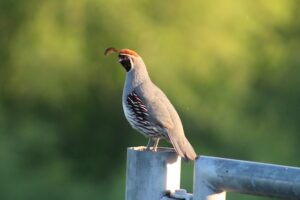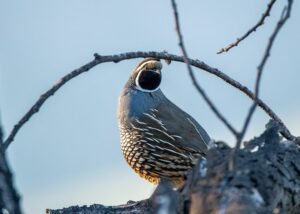What Color Is Quail Grey
Quails, tiny and obscure birds that fly through fields and underbrush, are renowned for their unique appearance and captivating behavior. There are many aspects that make these birds captivating. The color of their feathers is the most obvious factor to be considered. This blog will set out on a quest to find the answer to an inquiry that has caught the interest of a lot of people: Which color would be “quail grey”?
These birds that appear to be boring have an enchanting charm that usually goes unnoticed. Their hue plays an important part in their life. In exploring the intricate details of grey quail, We hope to shed more light on the mysteries behind this color, its significance in nature, and its enthralling cultural significance.
From the world of art to science and mythology to fashion, the quail grey color has shaped the world in ways that you would not think of. Join us in unraveling the mystery in “quail grey” and discover the mystery and beauty it has to offer.
Defining Quail Grey

Although “quail grey” may initially appear to be a simple term, its meaning is far more complicated than it appears to be. Let’s explore what “quail grey” really means and discover the many facets of this captivating color.
1. What does “quail grey” refer to
Quail grey, as its name implies, is a hue that is often used to describe the plumage and feathers of birds like quails. It’s a subtle gray shade that can vary between light and dark according to the bird’s species and the individual bird. This shade is used as camouflage for quails within their natural habitat, allowing them to blend in seamlessly with their surroundings.
2. Variations in grey quail shades among different species
The exact shade of grey quail varies between different species. Certain species of quails might exhibit a lighter, almost silvery grey, whereas others display a darker gray that is more brownish. The differences in grey quails are the result of evolutionarily-inspired adaptations to their unique environments and environmental demands.
3. How does it compare to other shades of grey
Quail grey stands out from other grey shades. In contrast to the cold, stark greys that are often associated with urban landscapes, quail gray is a warmer, more natural look. It’s a soft, subtle color that works well with the role of a quail as a ground-dwelling and unobtrusive bird.
Understanding the subtleties of quail grey is vital in understanding the evolutionary and ecological significance of this hue within the realm of Quals. In the next sections, we will look at the significance of plumage in these birds’ lives. We will also learn more about the elements that affect the hue of grey quail.
What Color Is Quail Grey
A quail’s grey color is soft, warm grey that has a hint of brown. It’s akin to feathered quail, which is generally a blend of brown, grey, and white. The grey hue of quail is a shade that could be applied in many different environments, from decor for the home to fashion. It’s an excellent option for formal as well as informal events.
Here’s a hex number for Quail Grey: #908f7d
Factors Affecting Quail Grey

Quail grey is a subtle and adaptable hue of these birds is not static and is it is influenced by many elements that are inherent to the life of the quails. Understanding these aspects can help us understand the changing characteristics of their feather colors.
1. Environmental Factors
- Habitat: Quail species are found in various habitats ranging from wilderness to dense forests. The hue of grey quails usually varies according to the habitat. For instance, quails that live in areas that are dry may display an edgier, lighter grey that blends into the landscape, while those living in woodlands may have a darker brownish grey, to complement the forest.
- Seasonal Changes: The plumage of quail can alter according to the season in order to better match their surroundings. In colder months, certain species have thicker, more pale plumage that blends with snowy landscapes. In warmer months, the plumage of their species may change to be darker.
- Geographical Variation: Quail grey may vary from one geographical location to one location due to variations in habitat and climate. This geographic variation is evidence of the adaptability of quails.
2. Seasonal Variations
- Molt: Quails undergo molting where they shed their feathers and replace them. The process may alter the hue of grey quail since new feathers might be slightly different in hue than the old ones. Molt also causes minor color variations during the transition time.
- Age-related Effects: As quails age, the color of their grey feathers may alter. Young quails typically have lighter, less subtle grey feathers, whereas older birds could have darker, more distinct grey quail feathers.
Understanding these variables provides insight on the resiliency and flexibility of quails in a variety of situations. When we continue to study, we will investigate whether Quail Grey is actually a real shade of grey. We will also look at the many common misconceptions regarding it.
The Beauty Of Quail Grey
Quail gray, commonly regarded as a dull and uninteresting color, is a unique hue that has its distinct charm and style. In this article, we will look into the aesthetic appeal and the cultural significance of quail grey, providing a glimpse into the often overlooked beauty of this slender color.
1. Appreciating the Understated Elegance
- Natural camouflage: The primary purpose of quail grey is camouflage however, this attribute is also a contributing factor to its aesthetics. Its seamless incorporation of birds in their surroundings is a testament to the subtle beauty of nature’s designs.
- Subdued simplicity: Grey is the embodiment of simplicity and pureness, making it a tranquil and peaceful color. Its neutrality serves as a backdrop on which other hues of nature can shine. it may evoke a feeling of calm and peace.
- The Adaptive Beauty: Quail grey demonstrates the apprehension of the quail. Their ability to alter their plumage according to what they see is a kind of living art that demonstrates the intricate interplay between evolution and ecological balance.
2. Camouflage and Its Significance
- Survival Strategy: Grey quail isn’t only about appearance, but it is also about being able to survive. The ability of quail greys to blend with the surrounding environment allows them to keep away predators and find food sources.
- The Evolution of Elegance: The appeal of quail gray lies in its importance as an evolutionary phenomenon. It’s a shade that has been refined over the course of millennia, which is a testimony to the subtle ability that is natural selection.
3. Quail Grey in Fashion and Design
- The Fashion Inspiring: Quail grey has made an insertion into fashion, design and style. Designers get inspiration from the colour and its connections with nature. They often use it to invoke feelings of peace and calm.
- Interior Aesthetics: For interior design, quail grey can be utilized to create calm as well as neutral areas. Being able to combine effortlessly alongside other hues makes it a suitable choice for many elements of design.
Conclusion
In the end, the elusive color “quail grey” proves to be more than an accent color; it’s an insight into the fascinating world of quails and their adaptable methods, and also the interaction between function and form in the natural world. We have discovered the subtleties of this hue, from its use as a powerful form of camouflage, to its delicate beauty, which is often under the radar.
Quail gray is a testimony to the beauty that endures simplicity. It is a hue which, although subdued, is inextricably linked to the evolution and survival of these amazing birds. When we consider our travels through the world that is “quail grey,” we are reminded that beauty is discovered in the most insignificant locations, and the beauty of nature extends to the tiniest colors of gray.
















